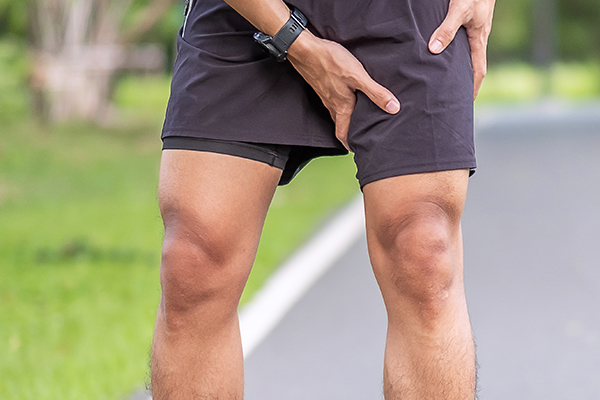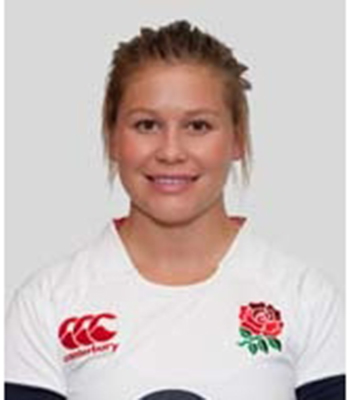Hip & Groin
Injuries
Our hips & groins are susceptible to a variety of injuries, which may occur from general wear and tear, playing sport, accidents, over-stretching or falls. Injuries and pain in these areas can make mobility extremely uncomfortable and impact on daily life. At Plymouth Injury Clinic, I treat your injury by restoring range of movement and flexibility, reducing / eliminating pain and strengthening the main structures involved in your condition.


Common treatable conditions include:
– Arthritis
– Bursitis
– Labral Tear
– Femoroacetabular Impingement
Arthritis of the hip is one of the most prevalent causes of hip pain and dysfunction. There are several types of arthritis with osteoarthritis being the most common. This condition is caused by wearing of the cartilage that surrounds the end of the bones within the hip joint. This causes friction, inflammation and can lead to the formation of bone spurs.
Common symptoms of arthritis include:
- Difficulty walking causing a limp
- Pain that gets worse with activity
- Pain in the hip, groin, outer thigh or buttocks
- Pain which is worse in the morning
Arthritis is typically treated with medicine such as anti-inflammatory drugs and / or symptom-modifying antirheumatic drugs (SMARDs) and disease-modifying antirheumatic drugs (DMARDs). From a treatment perspective a therapist will look to address the symptoms of pain and loss of mobility through exercise, and pain reducing therapy. It is also important to maintain a healthy weight, so appropriate exercise that minimises stress on the hip is advised in conjunction with a healthy diet. Exercises which strengthen the hip, buttock, core and thigh region are incorporated to help support the hip joint and facilitate better movement.
Bursitis is a condition in which bursae — sacs of liquid found between bones, muscles and tendons that ease the friction from these tissues rubbing together — get inflamed and cause pain. In most cases, bursitis develops due to repetitive activities that overwork and irritate the hip joint. We see this condition the most in older women.
As part of your treatment plan, your therapist will work with you to strengthen your gait, hip and core muscles to help take pressure off of your hip joint.
A hip labral tear occurs when you rip the ring of cartilage just outside of the socket of your hip joint. We see hip labral tears most often in athletes and individuals who perform repetitive twisting movements.
Symptoms of hip labral tears include:
- A clicking or locking sound in the hip
- Hip pain
- Hip stiffness
An individualized treatment plan will be created to help you heal and get back to the activities you enjoy.
Femoroacetabular impingement (FAI) is a condition in which extra bone grows on the side of the hip joint, causing the bones to have an irregular shape. As a result, the bones don’t fit together properly, rubbing against each other when you move.
Symptoms of femoroacetabular impingement can include:
- Hip pain
- Hip stiffness
- Limited range of motion
Treatment for FAI, which often develops because hip bones don’t form normally during childhood, will be determined with your sports therapist.
Hip flexor strains occur when your hip flexor muscles are stretched or torn. We classify hip flexor strains from grade one to grade three based on their severity. Grade one is when you experience mild stretching and microscopic tears, while grade three is when muscle fibers are completely torn or ruptured, causing you to no longer bear weight.
Common symptoms of hip flexor strains include:
- A visible muscle deformity
- Bruising
- Inflammation
- Pain in the front of your hip or in your groin
- Pain when walking up stairs
To help you fully recover from a hip flexor strain and prevent them from occurring in the future, our physical therapists will create an individualized care plan, specific to your symptoms and diagnosis, to get you back to what you love.
The Piriformis is a muscle found deep within the buttock region which plays an important role in helping us to walk by rotating the hip and moving the thigh away from the body (abduction). However this muscle is located near to the Sciatic nerve and when it spasms, irritates or compresses the Sciatic nerve it causes pain in the buttock and back of the thigh. For this reason this condition is often referred to as Piriformis Syndrome, however there are numerous other muscles in the deep gluteal region of the buttocks which may cause this irritation, hence the name Deep Gluteal Syndrome. Symptoms include the following:
- Tender buttock muscles
- Difficulty sitting without discomfort
- Tingling or numb sensations either in buttocks and / or radiating down back of legs
- Pain which is exacerbated with walking, climbing stairs or even sitting








